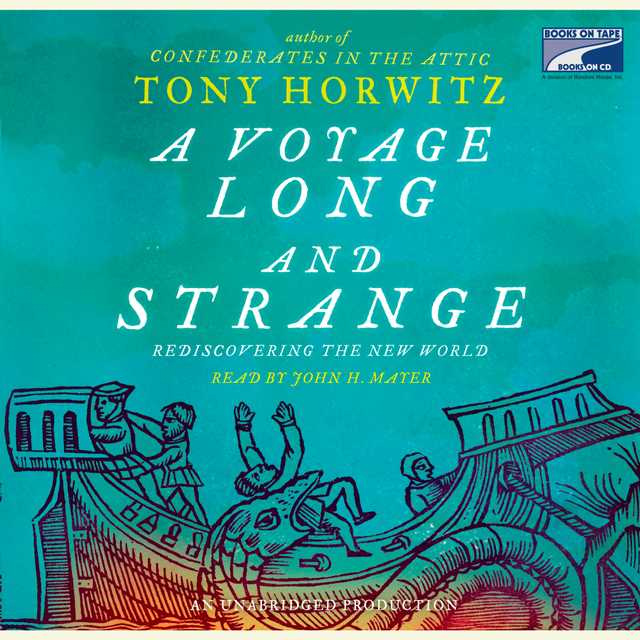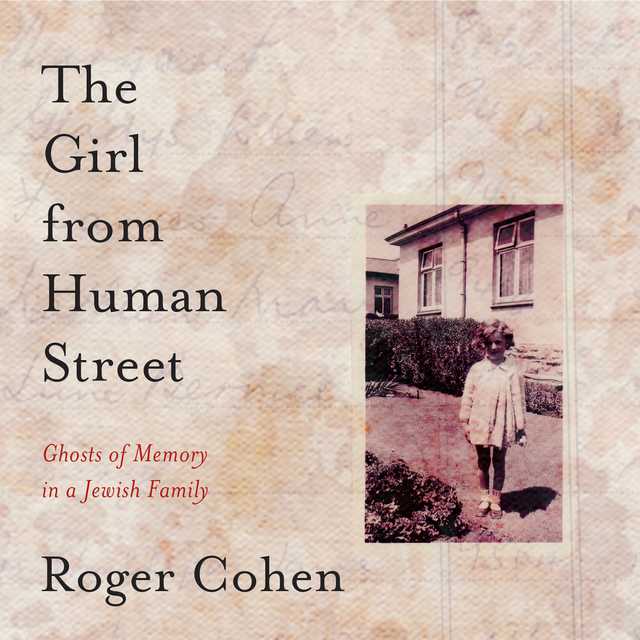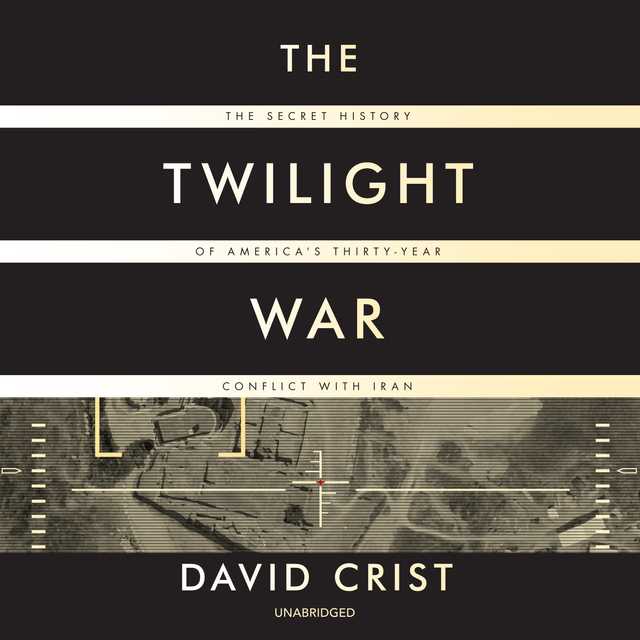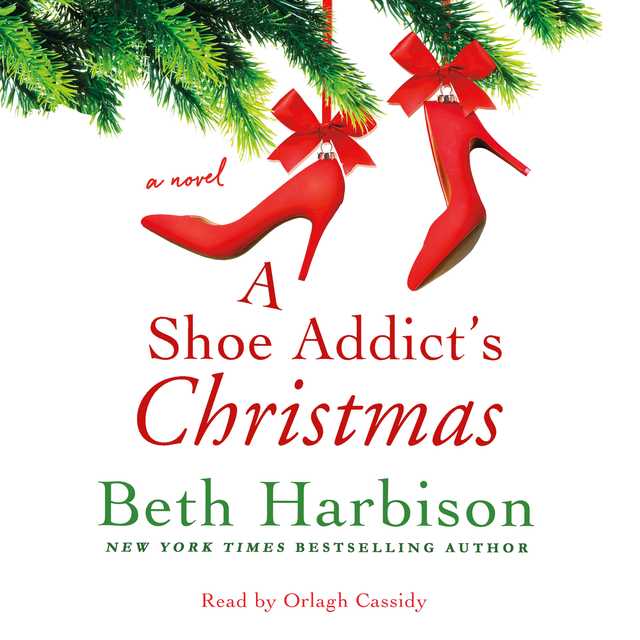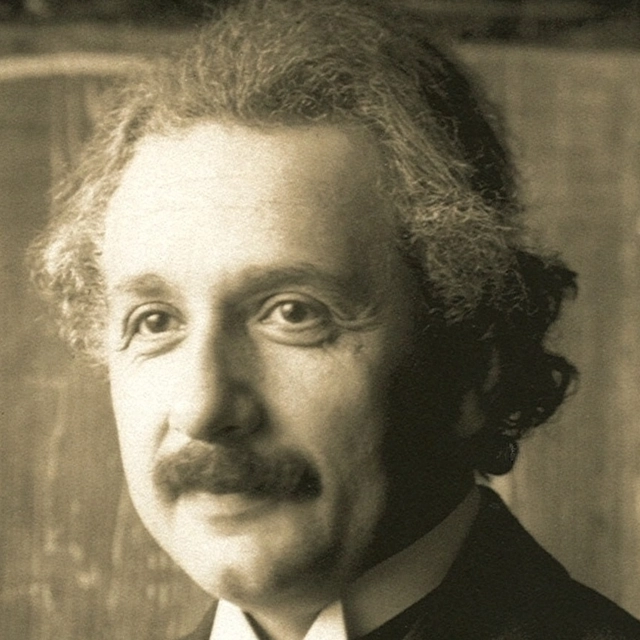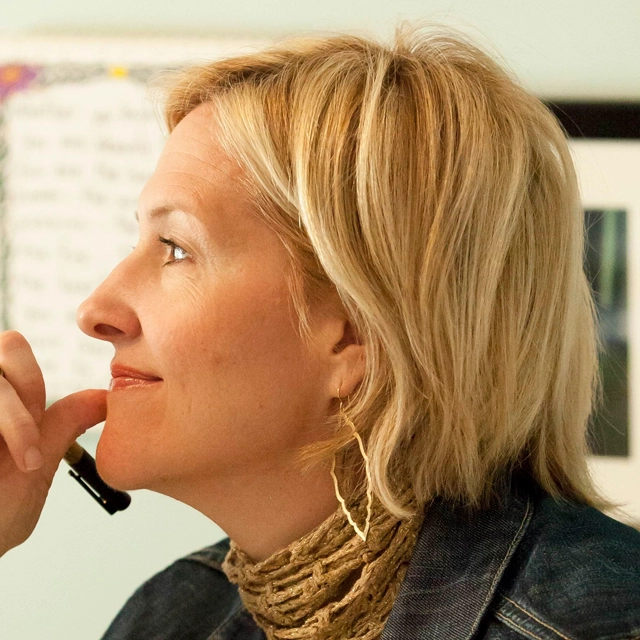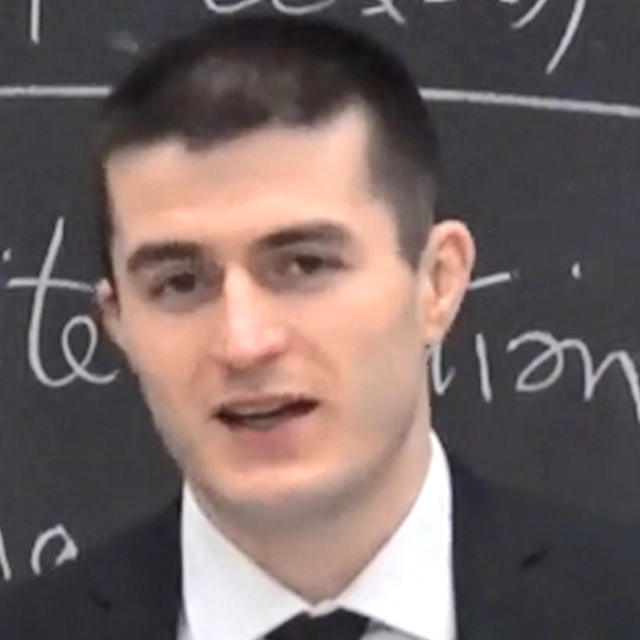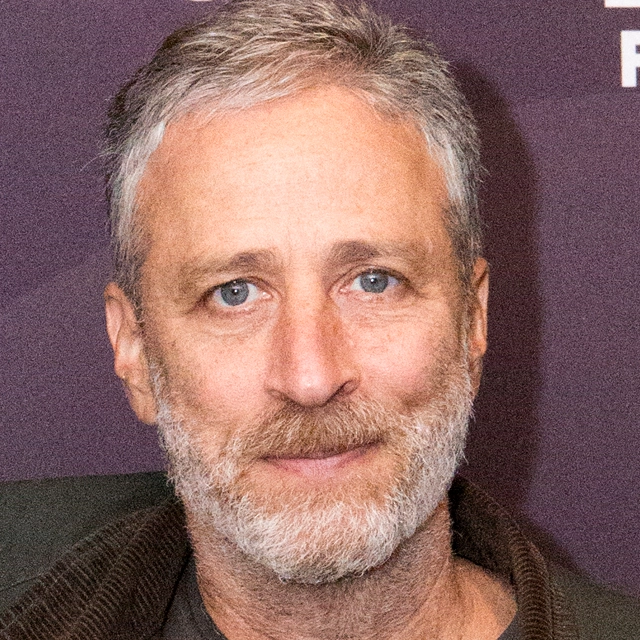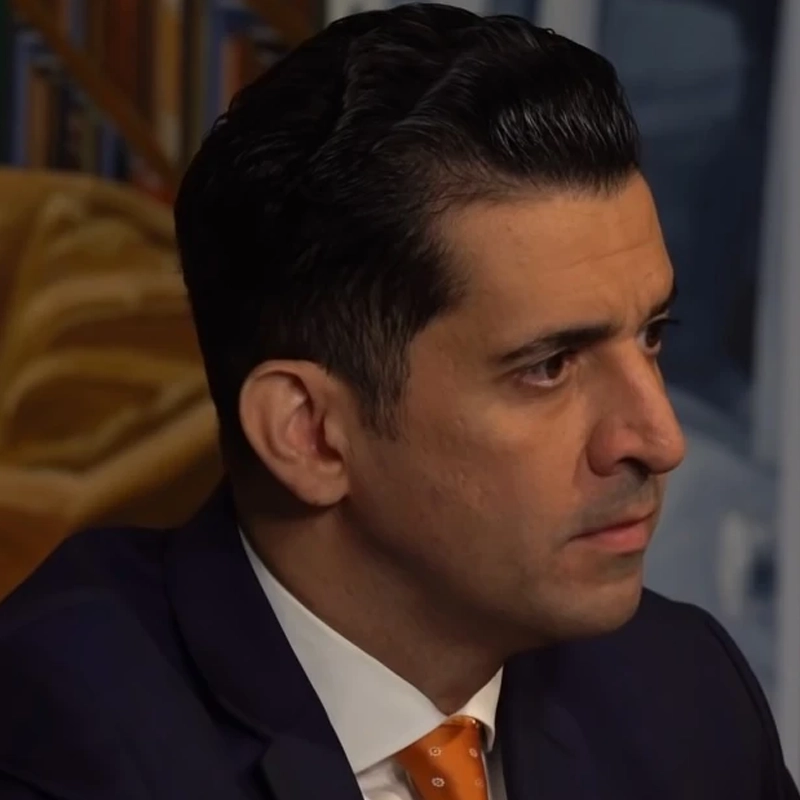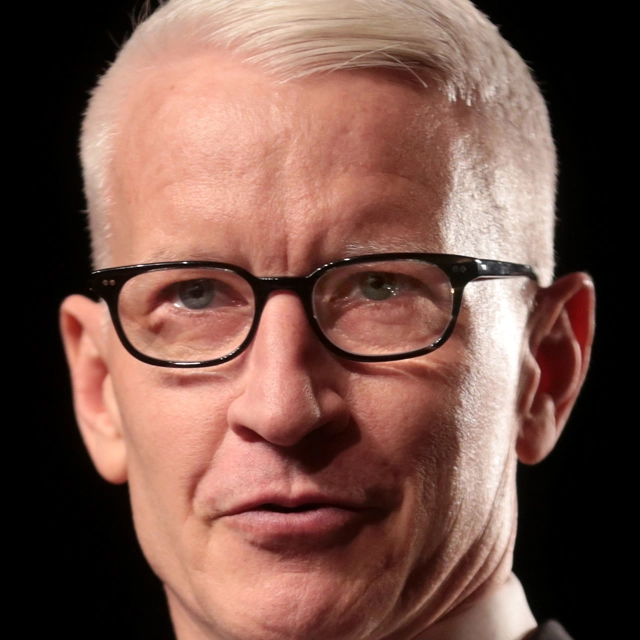The Hidden Palace Audiobook Summary
In this enthralling historical epic, set in New York City and the Middle East in the years leading to World War I– the long-awaited follow-up to the acclaimed New York Times bestseller The Golem and the Jinni–Helene Wecker revisits her beloved characters Chava and Ahmad as they confront unexpected new challenges in a rapidly changing human world.
Chava is a golem, a woman made of clay, who can hear the thoughts and longings of those around her and feels compelled by her nature to help them. Ahmad is a jinni, a restless creature of fire, once free to roam the desert but now imprisoned in the shape of a man. Fearing they’ll be exposed as monsters, these magical beings hide their true selves and try to pass as human–just two more immigrants in the bustling world of 1900s Manhattan. Brought together under calamitous circumstances, their lives are now entwined–but they’re not yet certain of what they mean to each other.
Both Chava and Ahmad have changed the lives of the people around them. Park Avenue heiress Sophia Winston, whose brief encounter with Ahmad left her with a strange illness that makes her shiver with cold, travels to the Middle East to seek a cure. There she meets Dima, a tempestuous female jinni who’s been banished from her tribe. Back in New York, in a tenement on the Lower East Side, a little girl named Kreindel helps her rabbi father build a golem they name Yossele–not knowing that she’s about to be sent to an orphanage uptown, where the hulking Yossele will become her only friend and protector.
Spanning the tumultuous years from the turn of the twentieth century to the beginning of World War I, The Hidden Palace follows these lives and others as they collide and interleave. Can Chava and Ahmad find their places in the human world while remaining true to each other? Or will their opposing natures and desires eventually tear them apart–especially once they encounter, thrillingly, other beings like themselves?
Other Top Audiobooks
The Hidden Palace Audiobook Narrator
George Guidall is the narrator of The Hidden Palace audiobook that was written by Helene Wecker
Helene Wecker received a BA from Carleton College in Minnesota and an MFA from Columbia University in New York. A Chicago-area native who has made her home in Minneapolis, Seattle, and New York, she now lives near San Francisco with her husband and daughter. The Golem and the Jinni is her first novel.
About the Author(s) of The Hidden Palace
Helene Wecker is the author of The Hidden Palace
More From the Same
- Author : Helene Wecker
- The Golem and the Jinni
- Publisher : HarperAudio
- Abraham
- American Gods [TV Tie-In]
- Dead Ringer
- House of Sand and Fog
- Prey
The Hidden Palace Full Details
| Narrator | George Guidall |
| Length | 16 hours 19 minutes |
| Author | Helene Wecker |
| Category | |
| Publisher | HarperAudio |
| Release date | June 08, 2021 |
| ISBN | 9780063097377 |
Additional info
The publisher of the The Hidden Palace is HarperAudio. The imprint is HarperAudio. It is supplied by HarperAudio. The ISBN-13 is 9780063097377.
Global Availability
This book is only available in the United States.
Goodreads Reviews
Jessa Rodrigues ☕ (decafJess)
July 06, 2021
I was incredibly nervous to start this book. I adored The Golem and the Jinni, but it has been eight years since I read it and the details were a little fuzzy. What if The Hidden Palace was confusing to me? What if it didn't live up the hype in my mind?I put it off until I couldn't any more and dove right in.If you, too, are feeling a bit anxious about forgetting the details of The Golem and the Jinni, fear not. It seems the author anticipated as much and lays a neat trail of breadcrumbs for us to follow, replaying memories for us, explaining prior events, and bringing us back up to speed. I fell right into the rhythm of the story, remembering as I went along, and was entranced.There are multiple narrators and they took turns being my favorite. There are, of course, Chava (the golem) and Ahmad (the jinni), along with Sophia (the young women whose brief dalliance with Ahmad in The Golem and the Jinni has left her in persistent physical suffering), Anna and her son Toby (Chava's pregnant friend from the previous book), and two new characters: a young jinn woman in the Syrian desert, and Kreindel, the young daughter of an Orthodox rabbi who stumbles into dark magic. Their stories all weave closer and closer together until they are all drawn together in a climactic finish.I felt most invested in Sophia's story, oddly enough, as I remembered little of her from the previous book, and loved the new characters. No one is completely good, no one is completely bad - they are all multifaceted and complex characters that we see from different angles, getting a better understanding of each them as they interact with the others. I would have read all 480 pages in a single sitting if my life would have allowed it. I very highly recommend this book, particularly to fans of historical fiction and magical realism. While it is chock-full of mythological elements, the historical and geographical setting are characters of their own and it doesn't quite feel right to call it a fantasy novel. It is a deep look at humanity shown through the lens of the inhuman.Again -- I VERY HIGHLY recommend this book.Thank you to the author for writing this.arc received to review
Will
June 08, 2022
If you have not yet read The Golem and the Jinni, stop! Right now! Go back. Read that, then we can talk about the sequel. Read it already? Great. Not yet? Ok, I’ll wait, but not for a thousand years, like some.You’re back? Cool. Great book, right? So Chava, the golem of book #1 and Ahmad, the jinni of that tale, are a bit older, and a bit wiser. They are also a bit more rounded as characters. We’ll get to them in a bit. Helene Wecker - image from Fantasy Book CafeThe story begins with an extremely devout rabbi, Lev Altschul (very old school) on the Lower East Side (not the guy from the earlier book) He has come across some ancient texts, books with arcane knowledge. He is not the greatest parent in the world, a widower, much more devoted to his studies than his daughter, Kreindel. She is taken care of by, essentially, a committee of congregation members. But she loves her pop and wants to learn, wants to study. Of course, girls were not welcome to imbibe the texts that Jewish boys were encouraged to learn. She spies on lessons and picks up what she can. As it happens there is a pogrom underway in one of the usual places in Eastern Europe. The rabbi, with the help of those old books, can now do something about it. He determines to send to a rabbi in Lithuania a weapon that can be used to defend oppressed Jews there. He works day and night to construct a golem for them. It does seem that Wecker’s golems always run into transit issues. Instead of heading across the Atlantic, as planned, this one, Yossele, remains in New York, due to an untimely building fire. He awaits only wakening. Replicants from Blade Runner – image from NMESpeaking of golems, Chava is trying her best to be as human as possible, given her natural limitations. Q: When you thought about writing a golem character, did you think about other legends and myths about people being created out of inanimate matter? Adam from earth? The famous Golem of Prague, the greek myth of Prometheus, or Pygmalion? Frankenstein’s monster? Or even the idea of creating a modern robot? Did you want to write from those traditions or come up with something completely different?A: I certainly wrote the Golem’s character with those legends and stories in mind. In fact, in early drafts she was much closer to something like the Golem of Prague. She had less emotion, and less insight into the emotions of others. But it became clear that that wouldn’t do for a main character. So I made her more empathic, more “human” in that sense, and I think that brought her closer to the androids and cyborgs of modern science fiction, like the replicants of Blade Runner and Star Trek’s Lt. Commander Data. But I think all these stories have the same sources at heart, and the same central question, of what happens when we create life that approaches human but isn’t quite. - from LitLovers interview re Book One Despite being a magical clay being conjured by a spell, Chava still feels the compulsion to help others. And being telepathic allows her to have a pretty good idea of what folks feel, and need. Shutting out the onslaught of telepathic noise remains a challenge, but a much reduced one, as she has learned how to block a lot of it out, and she tries to stay away from overcrowded places. Concerned about people noticing her agelessness, after so long a time at the bakery, where she has been working since she arrived, Chava decides it is wise to move on. After completing a course of study at Teacher’s College, she finds an excellent gig at a Jewish orphanage in Manhattan, teaching cooking.Lt Commander Data of Star Trek NG – image from WikipediaSpeaking of hot things, in Book One, Ahmad was mostly an elemental character, all fire and immediate gratification. Book Two shows a bad boy who can still bring the heat, but who has gained considerably more awareness, of himself, and of the world around him. He has grown a sense of decency, personal responsibility, and a need for purpose. He remains in business with Arbeely, the man who had released him from his thousand-year imprisonment in a flask. He molds iron with his bare hands. Business is good, booming even, so they expand to grander quarters, where Ahmad’s smoldering creative ambitions ignite to full blast.Sleepless in Manhattan, Chava and Ahmad walk the streets and rooftops in the wee hours. They are best friends, committed to exclusivity with each other re the benefits of their connection. The young man enamored of Chava in Book One, her husband, is no more, killed off in that earlier tale. She is rightfully concerned about the downsides of having a husband or bf made of flesh and blood, and who might not live, ya know, forever, not to mention the risk of him discovering what she really is. Ahmad has sworn off humans, after the damage he did to Sophia Winston in the first book.And, speaking of damaged heiresses, Sophia has been promoted to a top-tier character. She struggles to cope with the affliction that resulted from her getting jiggi with a jinni. I guess you could call it an STD, but not the usual sort. (Even had penicillin been invented, it would not have done the trick.) She cannot get warm. Sophia is convinced that only place where there is any hope of succor is the Middle East. She travels to many ancient sites, in a constant search for local experts in pharmacology able to concoct potions that alleviate her perpetual chill. (I suppose one might see in Sophia’s inability to douse her inner flames a symbol of her carrying the torch for someone. I wouldn’t. But some might.)Cleopatra’s Needle, was transported from Egypt and installed in Central Park in 1881 - image from WikipediaIn case there were not enough magical beings wandering about, Wecker balances the scales, tipped by the weighty presence of Yossele, by adding one more. As it happens, Sophia encounters in her travels yet another fire being, a jinniyeh, Dima. It appears that the iron-bound jinni (Ahmad) is a character of legend in the jinni world. This female jinni has something special about her too, (I mean, aside from being a jinni, and going about her business unimpeded by attire) and is hoping to meet up with the only other jinni she has heard of who is also an outsider in their particular circle. She stands in contrast to Ahmad, presenting as the self-centered ball of fire he used to be.Everybody wants something. Chava wants to be human; Ahmad wants a purpose; Sophia wants a cure; the jinniyeh wants a compatriot, maybe a partner. And in case that is not enough, Yossele wants to protect his master. Kreindel wants to study Hebrew and learn all that her father had learned. More? Remember Anna, a former workmate of Chava’s at the bakery? Chava had seriously put an end to Anna’s husband whaling on her, and subsequently helped Anna and her son, Toby. Anna is terrified of Chava and wants her to stay away. In this book, Toby is a fifteen-year-old Western Union messenger, who wants to know who his father is, and who that creep in his recurring dreams might be, and what the deal is with Chava and that Arab guy.Wecker has seriously kicked up her game for this novel. There was plenty going in in the first book in terms of discussions about serious questions of religion and morality. That is no less the case in this one, with the exception that these characters are better drawn, more complex, and more interesting. They struggle with ethical dilemmas, and are challenged to make difficult decisions. There are some lovely interactions among them that will make you smile, maybe even recognize similar tete-a-tetes from your own experience. Pennsylvania Station - image from Traditional BuildingThis is not a ha ha funny book, but there are some elements of humor here and there. In a way it is a running joke that Ahmad, while working on a large construction, has continual problems keep the over-sized glass panels he has designed from smashing. Given that the primary ingredient in glass is sand, it seems fair to ask if Ahmad might be trying to build a literal sand-castle.Washington Square Park – circa 1907 – image from NY Public LibrarySpeaking of palaces, not all are hidden. The newly opened Pennsylvania Station, a glorious structure, is seen as a kind of palatial caravansery, a roadside inn for travelers from all over, where information was exchanged and commerce was conducted. It is a favorite spot for Ahmad on his urban peregrinations. He does not tell Chava about it, however, which makes Penn Station a bit of a hidden palace for him. Enough, certainly to merit being shown on the cover of the book. The ancient city of Palmyra, which we visit in Sophia’s wanderings, had once been a center of trade, and had a caravansary, but was mostly a ruin at the time of her visit. Palatial buildings are not the only old-world structures that echo in early 20th century Manhattan. The famous arch in Washington Square Park, erected in 1895, which was featured on the cover of The Golem and the Jinni, is reminiscent of the famous arch of Palmyra. The Greenwich Village arch is encountered again in Book Two. Cleopatra’s Needle, a two-hundred-ton obelisk, originally built in Egypt in the 15th century, was transported to Central Park in 1881. Sophia’s father visits it often. The arch in Palmyra - image from WikipediaThere are many historical touchstones, as the book begins in 1900 and ends with the approach of World War I. Wecker notes the completion of the Williamsburg Bridge in 1903, the Triangle Shirtwaist Fire of 1911, the 911 of its time, with mass casualties, and people jumping from the top three floors of the ten-story Asch building to keep from being burned alive. We hear news of the start of World War I in Europe, come across the sinking of the Lusitania in 1915 and see the Arab community in lower Manhattan’s Little Syria neighborhood beginning its move to Atlantic Avenue in Brooklyn. We also see some of the anachronistic social and legal norms of the time. Kreindel is not allowed to study what Yeshiva boys can. Chava is not allowed to own property. Women walking alone at night are considered suspect. So the women in Wecker’s stories have to be extra strong. I don’t think I set out to deliberately showcase strong women, but I did consciously work to give every female character her due. I was very aware that I couldn’t be lazy about the women in my book, that the Victorian setting and the “fairytale” aspects might pull me toward more stereotypically weak or flat female characters if I wasn’t careful. At the same time, I couldn’t be anachronistic; I had to be true to the constraints that women lived with in that era. In the end, I became very interested in how they lived with those constraints, how they either chafed against them or found a (perhaps uneasy) peace and a certain amount of self-expression despite them. - from the Fantasy Literature interview in 2013Secrecy is a theme that permeates. Chava thinks Ahmad would prefer having a jinniyeh to her, but cannot bring herself to ask him. He is hiding from her what he has learned about a huge sacrifice Arbeely had made for him. Kreindel lies about her age, and is hiding the fact that there is a golem under her control in Manhattan. (For my money, Kreindel is the most intriguing character in the novel, a child with limited tools forced to cope with life and death decisions, in an often hostile environment. She generates both admiration for her tough-as-nails exterior and empathy for her suffering.) Sophia is hiding her need for a special potion. Dima hides from her kind what her special characteristic is. In addition to hiding from humans what she actually is, Chava keeps Riverside Park and the streets she walks by day secret from Ahmad, as he keeps Penn Station secret from her. Ahmad is working on a huge project in his building that he will not let anyone see. I suppose one might see each of these characters as their own walking, talking hidden palaces. The Williamsburg Bridge under construction circa 1900-1906 - image from the Library of Congress via Untappedcities.comThe whole Golem/Jinni duology (so far) might have gone in a very different direction. Wecker talks about how it all got started in a lovely interview with the blogger Lady Grey, who has, in fact, been a friend of Wecker’s since childhood. It was during her MFA program that Wecker ran into a problem. She had wanted to write a book of linked stories, family tales of cultural background and immigration. Wecker is Jewish and her husband is Arab-American. She was impressed by how similar their family stories were, and wanted to highlight that. You don’t pay all that money for them to be nice to you. They’re gonna tell you what they think. I was having this conversation with a friend of mine, Amanda, who was in my workshop with me. She gave me probably the best tough love conversation I’ve had in my life. She said, “Helene, can I ask you a question? Why are you writing like this?” I said “What do you mean, writing like what?” She said, “Ok, you’re doing these very Raymond Carver, very realist short stories. Very MFA model. But that’s not who you are. I’ve been to your apartment. I’ve seen your bookshelves. I know what a nerd you are. And you are always talking in class about injecting the genre into literature, and busting down the barriers and bringing magic into stories and that’s what you groove on. So why are you not doing that?” I honestly had never thought of that. She had taken my head and whipped it around to where I needed to be looking at. You know I’m still like “But that’s not…these stories…don’t…with the,…that, no.“ She said “ok, look. The next thing I see from you in the workshop, I want it to be about your family, but I want it to be magical.” I was like, “Ok…well that’s my marching orders. I’m going to do what she said. I went home and sat and thought about it. It was, literally, two hours later I had the rough outline for what would be The Golem and the Jinni.” - from the Lady Grey interviewIt has been eight years since The Golem and the Jinni was published. Why did it take so long to wrote Volume Two? When her first novel was published, Wecker had a one-year-old. That child is now nine and a second has joined the family. Go ahead, try writing a novel with a baby, then giving birth to another, then having small children to take care of, even if you are sharing the duties with your mate. Piece of cake, right? Her editor was pretty understanding, at one point even telling her that if she was not ok with what she had written so far, to take another YEAR! So, supportive beyond belief. I was lucky, and The Golem and the Jinni was successful enough that, before long, I could start thinking seriously about selling my next book. Readers seemed interested in a sequel; my publisher, too, liked the concept. I had a few vague ideas for other, non-Golem-and-Jinni books, but none of them were clamoring to be told. I was now mother to a two-year-old, with a baby on the way. I was turning forty, and I was tired. The first book had taken me seven years to write. I really, really didn’t want to do that again. Write a sequel, said my weary brain. It’s got to be easier than starting over from the beginning. - from the Fantasy Café interviewI guess that may have provided the needed direction, but her real -world constraints remained, and the work took much longer than hoped. I have seen no affirmation that a third Golem/Jinni book is planned. A third book is expected from Wecker, but there is no certainty that it will be another Golem/Jinni novel. In the interview with Lady Grey, Wecker talks about having a slew of material that was cut from this book. It sounded to me like she was contemplating a volume of stories that could accompany her two novels. But the ending of this one presents several hooks that could be developed into a third novel. I know which direction I hope she takes. ==========In the summer of 2019 GR reduced the allowable review size by 25%, from 20,000 to 15,000 characters. In order to accommodate the text beyond that I moved it to the comments section directly below. Then in 2021 GR further reduced our capacity for including external links in comments making it a challenge to update reviews posted before then. So for the rest of the review, updated June 2, 2022, and EXTRA STUFF, please head over to my site, Coot’s Reviews.
Tadiana ✩Night Owl☽
August 27, 2021
4.5 stars. Review first posted on FantasyLiterature.com:In The Hidden Palace Helene Wecker returns to the richly-imagined world of The Golem and the Jinni, fin de siècle New York City, focusing on the Jewish and Syrian immigrant communities. Chava, an intelligent golem created by an evil-hearted genius, was set free by the unexpected death of her intended husband and master, left with the ability to hear the thoughts of all humans instead of just her master. The jinni Ahmad is released from the bottle that imprisoned him, but he is bound to tangible human form with no discernable way to remove the curse. Despite their opposite natures of earth and fire, golem and jinni are drawn together in a world where neither fits in, and both are hiding their true natures from the humans around them … at least, most of them.As The Hidden Palace begins, Ahmad returns from his journey to Damascus, disheartened by the inability of his jinn people to remove the enchanted iron arm cuff that chains him to human form. He returns to the metal-smithing shop of Boutros Arbeely as a partner, while Chava is still the lead baker at Radzin’s Bakery, though as the years go by she worries that people are starting to notice that she never ages. Ahmad and Chava tentatively begin a new phase of their relationship, but their personalities — as different as their natures — lead to conflicts.Wecker weaves several other characters and subplots into this novel, which stretches over several years in the early 1900s. A brilliant but neglected young Jewish girl, Kreindel Altschul, is drawn into her old-school (heh) rabbi father’s plans to create a huge golem to assist the Jewish people against their oppressors in eastern Europe. But Kreindel’s father is in ill health, and he lacks the skills of the magician who created Chava. Chava’s former friend Anna had her trust in Chava broken when she became aware of Chava’s monstrous nature and immense strength and has avoided Chava for years, but her son Toby is curious about his mother’s old friends, and haunted by persistent nightmares of a wicked magician that he can’t understand.Wealthy socialite Sophia Winston, left with a debilitating physical chill from her brief affair with the jinni in the first book, breaks free of the strictures of New York high society and travels to the Middle East in search of a cure, protected by a pair of retired Pinkerton detectives. There Sophia meets a female jinni, or jinniyeh, called Dima, who has the unique ability to touch iron and a fascination with the stories she’s heard of the iron-bound jinni who lives in America. Dima promises Sophia a cure to what has ailed her for so long, but for a price.I’m not sure what direction I thought Helene Wecker would go with this sequel to The Golem and the Jinni, but The Hidden Palace was surprising in some good ways. We meet all of our favorite characters from the first book, along with some new key viewpoint characters. Of the new characters, I especially loved Kreindel, who is stubborn and doesn’t always make wise choices or adapt well to her surroundings, but has immense strength of character and intelligence. Familiar characters face new challenges that flow from the prior conflicts and issues but take them in new directions. Chava gains special admission at the Teachers College at Columbia University, and eventually winds up teaching Culinary Science at the Asylum for Orphaned Hebrews, where she crosses paths with a certain headstrong teenage girl and her massive golem that hides in the Asylum’s basement. One of the most delightful parts of this novel was just how dedicated and inspired Chava is as a teacher of young girls.One of the things that impressed me most about The Golem and the Jinni was how vividly Wecker recreated historic New York City. Her world-building skills are marvelous, and in The Hidden Palace she weaves many historical events and people into her narrative, including T.E. Lawrence (Lawrence of Arabia), the torpedoing of the Lusitania, deadly tenement fires, and the calamitous Triangle Shirtwaist Factory fire.The Hidden Palace is somewhat slower-paced; like the first book, it tends to meander between different subplots and take a lot of time to develop the story and build toward the final conflict. Those culminating scenes didn’t have quite the power or impact of those in The Golem and the Jinni. The resolution of a couple of the plotlines (Toby’s nightmares and the jinniyeh’s search for a kindred spirit) struck me as rather anticlimactic.Still, this is an engaging and touching novel, dealing with not just conflicts between people but also with themes of love and developing understanding and friendship, even when there are vast differences between us. Ahmad builds a beautiful and fragile secret construction inside the Amherst building, which may be the primary hidden palace of the story, but I think the title also alludes to the secrets and hidden strengths within the characters themselves.Initial post: Look at this! A sequel to the wonderful fantasy The Golem and the Jinni! And I've just been sent the ARC, without even having asked for it (it warms my heart so much when publicists contact me to offer books I'm really excited about reading). So it's a happy day here in the Night Owl household. :)
Angela M
June 30, 2021
“Jewish and Arab folklores, magic, the Jewish and Syrian immigrant culture and two unforgettable inhuman but sometimes human characters converge on the streets of New York . This makes for a very compelling story that is very different from what I normally read, but yet enjoyable . The lovely style of writing kept me there when some of the story seemed a bit convoluted. The book raises questions about love, friendship and what it means to be human.”The above was the brief review that I wrote after reading The Golem and the Jinni. I could say pretty much the same thing about this long awaited sequel. The story of Chava and Ahmad continues, with some new characters including another golem and another jinni, a female jinniyeh, as well as some recurring characters, Anna and Sophia. Told from multiple perspectives, their stories mesh, moving between Syria to New York City. Just as in the first book, this will require a suspension of disbelief and my guess is that if you enjoyed the first book and were as anxious as I was to see what the future would bring for Chava and Ahmad, you’ll enjoy this one. It’s over eight years since the first book , so I was glad that the author refreshes us with some of the details of that book. One of the things I really enjoyed was how the story reflects the time and place so well. We’re taken back to historic New York City, one of my favorite places and times to read about in the past. I love how Weckler touches on certain events that depict what is happening not just in New York , but the country and the world . The Triangle Shirtwaist factory fire , Women’s voting rights, workers’s rights , the automobile the Titanic, WWI are some that struck me. The writing is wonderful. “ The months stretched onward, the seasons passing each in turn, completing their circle, beginning again. And as they changed, New York changed, too, the city reveling in its constant newness, its own restless cycle of reinvention. Automobiles began to fit the streets…The long awaited subway opened at last…Telephones appeared …”While fantasy or folklore , while the main characters are non human, although you’d swear they were at times,and while this is not my usual kind of book, I enjoyed getting back to Chava and Ahmed. Recommended to those who enjoyed the first book, or if you’re looking for a little something different to read I received a copy of this book from HarperCollins through Edelweiss.
Elyse
June 11, 2021
Two supernaturals …. Plus two more! > yes another golem and another female-jinni…. …sounds complex ….but the story flows effortlessly and the dazzling magic that captured our hearts in the first book — does so again in this second book. Actually… there is just ‘more’ of everything…. ….more drama, romance, more changes in relationships, history, (The Triangle Shirtwaist Fire, The Sinking of the Titanic, The Odessa pogroms, and the beginning of the Great War), more characters, more suspense, more mythology, heroes and villains, action, travel, more community collaboration, more historical years covered, and more unexpected uniqueness.It’s just MORE….This sequel, “The Hidden Palace”, to “The Golem and the Jinni” is on steroids……and as enchanting as can be. From 1900 - to 1915 … Helene Wecker takes us beyond lower Manhattan, and Little Syria to the Middle East…with new characters- new challenges - new storyline- some oddball surprises requiring us to suspend a little belief, a couple wonderful character standouts: Kreindel, an uncompromising orphan, and Toby, a jocular bike messenger, …..along with Chava and Ahmad….there is just the right amount of emotional strife….seriousness, and uncanny folklore.“The Hidden Palace”, this historical legend tale is a smashing hit….packed with ingenious sides, illuminated by warmth and delicacy of Helene’s prose. An ambitious achievement,…..dazzling, delightful, and deeply affecting. MARVELOUS!!! Note: Goodreads member and friend, Will Byrnes wrote an outstanding comprehensive review. For more details … I highly recommend reading his review. This is one of those self select novels. If you loved “The Golem and The Jinni”… you’ll love “The Hidden Palace”.
NILTON
July 10, 2021
It’s with great sadness that I must separate myself from this book.As I said during my reading activity, this is an absorbing work of love.With this one, 8 years after the publication of “The Golem and the Jinni”, which mesmerized me, the author once again surprised me and surpassed any expectations that I had.The writing is superb! Her talent of telling a story is extraordinary.What an enthralling book!There is a delicious level of maturity that is simply fascinating.The storyline is awesome! There were times that I thought I knew where it was going, just to realize later how wrong I was (but to my delight).The characters are so rich and so believable and so interesting.Not once I was bored or disappointed.I just can’t praise this book enough.If you have not read the first book, you don’t know what you are missing. What an imagination the author has.I’m closing this chapter with goosebumps running from head to toes.Brilliant!
Ashley
September 16, 2021
I'm having a hard time reviewing this one, mostly because I had a hard time deciding what I thought about it. But I'm on the verge of getting hopelessly behind in reviews again, so it's time to buckle down and figure it out. I was thinking about the book this morning and I think I've finally formed some solid opinions, so here we go.This is a book about change in all its forms: death (and grief), destruction, creation, evolution, the way a person changes when they let other people into their lives, progress, sickness, learning, growing up, breaking up, getting old. You get the idea. And I think the main thing that was unsettling me about this book is that I didn't want things to change for these characters, in fact at points during this reading experience, I actively resented it. This is what we call irony! This book dragged me kicking and screaming through its pages. I wanted Chava and Ahmad to keep their happily ever after ending, and I wanted that first book to remain its own perfectly contained thing, the characters frozen in time, but that is not what the author wanted, and this case I think the author was right. I rail against unnecessary sequels all the time, but this was a good one. I'm not going to say too much about the plot, other than it takes place over a longer period of time than the first book, taking us from the early 1900s through the early years of the first world war. It remains a lovely portrait of immigrant life in turn of the century NYC. She also introduces two new characters who act as foils and funhouse mirror images for Chava and Ahmad that I think ultimately really ties the whole thing together. The book leaves us in a good place, one where you can imagine your own ending, and I do hope she leaves it that way this time. (I will of course pick up any more books she chooses to write, even if they are sequels.)
Allison
August 04, 2022
If you read and enjoyed Golem and the Djinni, you must read this. It's beautiful.The world is a full character, the characters are at once very, very human and so very apart, and the struggles they and their more mundane friends see and overcome throughout are mesmerizing.Perfect instalment in the series, lush, haunting, and so infused with love--of these characters, these cultures, the time, the city and the written art. Absolutely worth every second you spend here.If I had to have a complaint, it's that watching people who shouldn't have to worry about the very human and hurtful ailment that is building a strong and healthy relationship was a bit over the top. But I can't tell if I just hate seeing it happen, or if it was a bit overwrought, so I can't in good conscience detract for this.Really hope a third is announced!
Miriam
August 17, 2021
Now, I’m not normally one for the fantasy fiction genre, though I have enjoyed the odd book now and then. However, I do love fantasy/super hero type programmes and movies, so I certainly have the imagination to understand and conjure up any imageries authors aim to convey to readers. So when the opportunity to read Helene Wecker’s second book in ‘The Golem and the Jinni’ historical fantasy series “The Hidden Palace”, I thought why not? It’s nice to take a break from run of the mill genres and diversify into more challenging reads. • Chava is a golem, a woman made of clay, able to hear the thoughts and longings of the people around her and compelled by her nature to help them. Ahmad is a jinni, a perpetually restless and free-spirited creature of fire, imprisoned in the shape of a man. Fearing they’ll be exposed as monsters, these magical beings hide their true selves and pretend to be human—just two more immigrants in the bustling world of 1900s Manhattan.Bearing in mind that the two main characters weren’t even human per se, I was astonished that I instantly endeared to them and became fully invested in their survival. The whole unique cast of rich characters, each with their own exquisite complexities, were so realistic one could be fooled into believing we do live alongside these people all the time. This was a powerhouse of a story, exciting, exquisitely plotted and with some genuinely emotional scenes, this book had it all. I was impressed with the many historically correct events the author incorporated. From the deadliest industrial disaster the history of the Manhattan has ever seen, to the building descriptions and opening of Pennsylvania Station and the archaeologist Gertrude Bell during her travels through the Middle East to name but a few.I loved how the connecting but individual stories blended together seamlessly. Sophia’s descriptive and exotic travels through the Middle East, the jinni and his Lebanese business partner Arbeely as they work alongside each other in their ‘Little Syria’s’ forge. The golem and her friend Anna as they deal with their unusual friendship and a Rabbi’s daughter, as she is left in sole charge of her father’s own golem creation. “The Hidden Palace” is a terrifically written, grown up fairy tale combining perfectly historical fiction with fantasy fiction, whilst fusing a touching love triangle with a tense and gripping tale. I was so impressed, I’ve now ordered the first in the series “The Golem and the Jinni” to read their backstories to see how they came to arrive in Manhattan and I really can’t wait to start on it!5 stars
Krista
March 01, 2021
I was so happy to be back in this world with Ahmad and Chava! The sequel is just as immersive as the original, and it was lovely visiting with these old friends. Things are changing in the world, and for our favorite beings from folklore. Chava wonders how she will hide her lack of aging from the community she has built, while Ahmad worries he is becoming too like the people he lives amongst. As they push each other, resentments grow. Will Chava and Ahmad find a way to work out their differences? And what will happen when they find new people more like themselves?NetGalley provided me with an arc in exchange for an honest review.
K Marcu
September 19, 2021
This book is absolutely beautiful.
~ a foray in fantasy ~
December 17, 2021
This book didn’t quite live up to my expectations. Some of the enthralling magic of the first book was missing out. There wasn’t really a solid plot, which lent the book an overall untethered feel. The main characters also lost a bit of their personalities, but the side characters only benefitted from it. Toby, Kreindel, and Sophia were all much more intriguing characters in this book.The themes tackled are unique and reminiscent of a cross between Addie LaRue and City of Brass.4.25 stars
Bradley
December 09, 2021
Like the first book, this one is truly excellent. These are lush characters, complicated, subtle, and both are so aware of the pulls that threaten to tear them apart. Their nature versus the pull of humanity, just trying to live and survive and perhaps find a little love in this pre-WWI human world.No kind of review can truly explain this. The details, the immersion, and the depth of emotion are what make this a great book. It's magical realism done right. I truly cared and got torn apart by all the pulls.A little bit of brutal honesty here: I've never been much of a fan of Magical Realism. I can count on only two hands the number of MR books that I thought were truly great. The rest either felt pretentious or vapid or an excuse to write a banal book and slap a little bit of magic in there to have it slide into the specific genre like an evil-ass bird egg-bombing another species' nest. But Helene Wecker's two novels are the real deal. Genuine and heartfelt. They came alive for me and this is why I'm so impressed.This might be one of my favorite fantasies of the year and it's not even close to being my preferred subgenre. :)
Stephanie G. Lewis
November 15, 2022
I had vowed to only read series from dead authors. I hate to wait for the next book.I waited! I read it with delight and despair. In a few months or so, I will read it again.
Frequently asked questions
Listening to audiobooks not only easy, it is also very convenient. You can listen to audiobooks on almost every device. From your laptop to your smart phone or even a smart speaker like Apple HomePod or even Alexa. Here’s how you can get started listening to audiobooks.
- 1. Download your favorite audiobook app such as Speechify.
- 2. Sign up for an account.
- 3. Browse the library for the best audiobooks and select the first one for free
- 4. Download the audiobook file to your device
- 5. Open the Speechify audiobook app and select the audiobook you want to listen to.
- 6. Adjust the playback speed and other settings to your preference.
- 7. Press play and enjoy!
While you can listen to the bestsellers on almost any device, and preferences may vary, generally smart phones are offer the most convenience factor. You could be working out, grocery shopping, or even watching your dog in the dog park on a Saturday morning.
However, most audiobook apps work across multiple devices so you can pick up that riveting new Stephen King book you started at the dog park, back on your laptop when you get back home.
Speechify is one of the best apps for audiobooks. The pricing structure is the most competitive in the market and the app is easy to use. It features the best sellers and award winning authors. Listen to your favorite books or discover new ones and listen to real voice actors read to you. Getting started is easy, the first book is free.
Research showcasing the brain health benefits of reading on a regular basis is wide-ranging and undeniable. However, research comparing the benefits of reading vs listening is much more sparse. According to professor of psychology and author Dr. Kristen Willeumier, though, there is good reason to believe that the reading experience provided by audiobooks offers many of the same brain benefits as reading a physical book.
Audiobooks are recordings of books that are read aloud by a professional voice actor. The recordings are typically available for purchase and download in digital formats such as MP3, WMA, or AAC. They can also be streamed from online services like Speechify, Audible, AppleBooks, or Spotify.
You simply download the app onto your smart phone, create your account, and in Speechify, you can choose your first book, from our vast library of best-sellers and classics, to read for free.
Audiobooks, like real books can add up over time. Here’s where you can listen to audiobooks for free. Speechify let’s you read your first best seller for free. Apart from that, we have a vast selection of free audiobooks that you can enjoy. Get the same rich experience no matter if the book was free or not.
It depends. Yes, there are free audiobooks and paid audiobooks. Speechify offers a blend of both!
It varies. The easiest way depends on a few things. The app and service you use, which device, and platform. Speechify is the easiest way to listen to audiobooks. Downloading the app is quick. It is not a large app and does not eat up space on your iPhone or Android device.
Listening to audiobooks on your smart phone, with Speechify, is the easiest way to listen to audiobooks.












